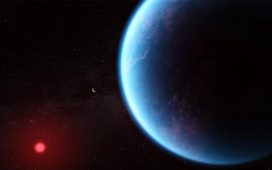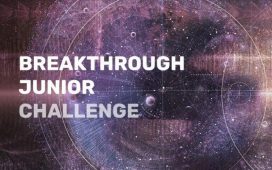A new method of exploration
Instead of using virtual reality headsets, this experience utilizes handheld tablets that serve as windows into the virtual space.
“When you’re wearing virtual reality goggles, you can’t engage directly with anyone else in the space with you. You can’t see them. You can’t talk directly to them in an easy or natural way. We wanted learners to be able to use normal social interaction as part of the learning experience,” Ogle said.
The virtual environment consists of a 30-by-30-foot space with four devices that track the location and orientation of tablet computers used by the students. Within this virtual environment, young learners can explore the solar system in pairs or solo, interacting with the content, the teacher, and one another while doing so.
Addressing misconceptions about space
The program’s developers created an immersive experience that accurately represents how the solar system functions. This means myth-busting some popular misconceptions.
“There are a lot of ideas that students have such as how big all of the planets are and how close they are to each other as well as how the moon phases truly work,” said Matthew Gallagher, computer engineering major and immersive developer on the project.
Users are virtually placed in the true-to-size solar system. When accurately presented, planets are impossible to see. The sun, which only takes up two pixels on the screen, is the only object visible to the human eye. To make sense of the black void, the developers placed arrows to point to where planets would be in their orbits.










